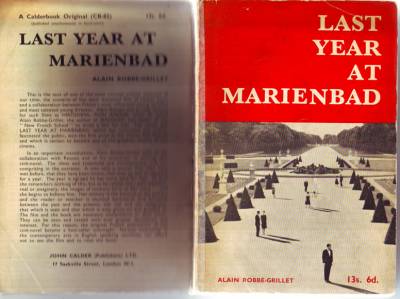- Wendy (2023)
- Aureole (2021)
- PHX (X is for Xylonite) (2019)
-
Its soil was a plot
she do the tree in different voices (2017) - nine nine nine nine nine (2017)
- Diviner (2017)
- CANWEYE { } (2016)
-
Inside the book
an ever changing spectacle unfolds (2015) - The Star and the Glow Worm (2015)
- APEX (2014)
- The Aphotic Zone (2014)
- Another way of reading (2014)
- NOCTURNES (2013)
“The collaboration between a director and his scriptwriter can take a wide variety of forms. One might almost say that there are as many different methods of work as there are films. Yet the one that seems most frequent in the traditional commercial cinema involves a more or less radical separation of scenario and image, story and style, in short, “content” and “form”.
“For instance: the author describes a conversation between two characters, providing the words they speak and a few details about the setting; if he is more precise, he specifies their gestures or facial expressions; but it is always the director who subsequently decides how the episode will be photographed, if the characters will be seen from a distance or if their faces will fill the whole screen, what movements the camera will make, how the scene will be cut, etc. Yet the scene as the audience sees it will acquire quite different, sometimes even contradictory meanings, depending on whether the characters are looking towards the camera or away from it, or whether the shots cut back and forth between their faces in rapid succession. The camera may also concentrate on something entirely different during their conversation, perhaps merely the setting around them: the walls of the room they are in, the streets where they are walking, the waves that break in front of them. At is extreme this method produced a scene whose words and gestures were quite ordinary and unmemorable, compared to the forms and movement of the image, which alone has any importance, which alone appears to have a meaning.
“This is just what makes the cinema an art: it creates a reality with forms. It is in its form that we must look for its true content. The same is true of any work of art, of a novel, for instance: the choice of a narrative style, of a grammatical tense, of a rhythm of phrasing, of a vocabulary, carries more weight than the actual story. What novelist worthy of the name would be satisfied to hand his story over to a metteur-en-phrases who would write out the final version of the text for the reader. The intention governing the conception of a novel involves both the story and its style; often, it is actually the latter which comes first in the author's mind, as a painter may conceive of a canvas entirely in terms of a vertical lines before deciding to represent a skyscraper group.
“And no doubt the same is true for a film: conceiving of a screen story, it seems to me, would mean already conceiving of it in images, with all the detail this involves, not only with regard to gestures and settings, but to the camera's position and movement, as well as to the sequence of shots in editing. Alain Resnais and I were able to collaborate only because we had seen the film in the same way from the start; and not ust in the same general outlines, but exactly, in the construction of the least detail as in its total architecture. What I wrote might have been what was already in my mind; what he added during the shooting was what I might have written.”
Alain Robbe-Grillet, introduction to Last Year at Marienbad: a cine novel (1961) p5-6.
